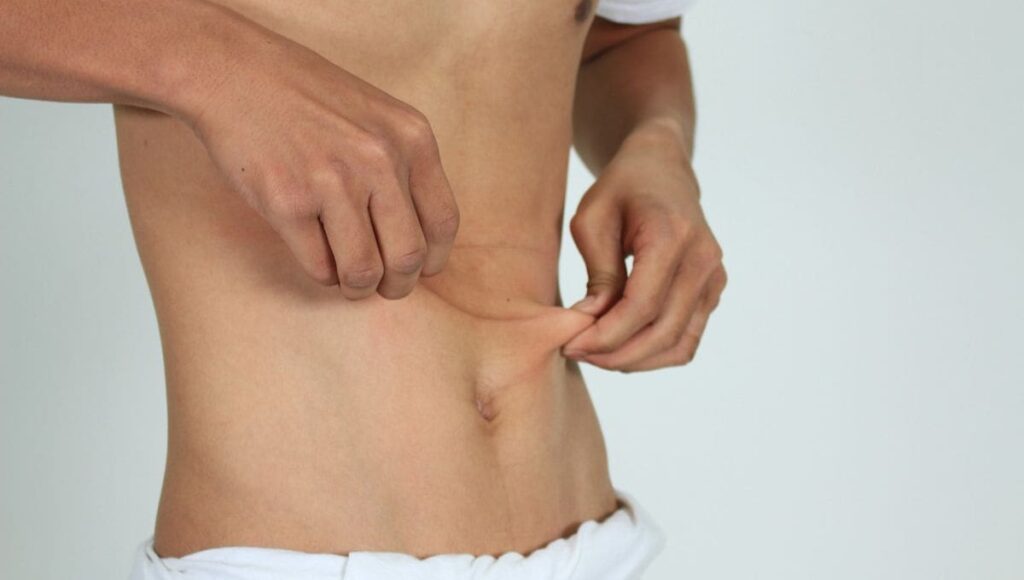If you do this after every workout, you will burn twice more fat than usual. Check it out.
Are you tired of the endless promises of magical fat burner pills, detox drinks, and body wraps that seem to yield no real results? Look no further; we have a fat-burning hack that actually works, backed by science and effort. If you do this after every workout, you will burn fat 2x more.
The information for this article was first shared in a video uploaded by Max Posternak. He is the founder of Gravity Transformation, a website focused on giving tips and training guidance for people looking to improve their fitness and lose weight. His YouTube channel has over 5.5 million subscribers.
Without further ado, let’s dig deep into what you should be doing after every workout to burn twice more fat and completely transform your body.
How To Create The Optimal Caloric Deficit For Fat Loss
Do This After Every Workout to Burn Twice More Fat
In a world inundated with promises of magical fat burner pills, detox drinks, and body wraps, it’s often challenging to discern genuine methods for achieving tangible fitness results. However, we’re here to introduce you to a fat-burning hack that not only defies the gimmicks but is also rooted in science and requires your dedicated effort. Say goodbye to the notion of achieving results while lounging on the couch; this method demands your commitment to truly work.
The essence of this groundbreaking approach lies in understanding the intricate relationship between your body’s fuel sources and the type of exercise you engage in. When you embark on weight training workouts, your body predominantly taps into a fuel source known as glycogen.
This compound, derived from carbohydrates, finds its primary storage locations in the liver and muscles. The beauty of this fat-burning hack lies in the fact that weight training, being an anaerobic exercise, extensively relies on glycogen and carbs to power through the session.
How to Use Walking to Get Down to 12% Body Fat
To optimize fat burn, it’s crucial to incorporate weight training sessions lasting between 45 minutes to an hour. This duration allows you to deplete a substantial portion of the glycogen stored in your muscles and liver, setting the stage for the subsequent fat-burning phase.
 Source: Lucas Guimarães Bueno on Pexels
Source: Lucas Guimarães Bueno on PexelsOnce your glycogen stores are sufficiently exhausted, your body undergoes a metabolic shift, turning to fat as a primary energy source. This process, known as lipolysis, involves the breakdown of fats into glycerol and fatty acids. These components can then be either directly utilized for energy or converted into glucose through a multi-step process called gluconeogenesis. This metabolic transition creates an optimal environment for burning that stubborn fat you’ve been working so hard to shed.
But the journey doesn’t end with weight training. To capitalize on this metabolic shift and maximize fat burn, we introduce a strategic high-intensity interval training (HIIT) workout at the conclusion of your weight training session. This post-workout regimen, lasting a mere 10 to 15 minutes, serves as the catalyst for doubling your fat-burning potential.
Now, let’s delve into the details of the two versions of this fat-burning finisher.
The first version adopts a circuit-style approach, featuring four dynamic exercises: step-ups and mountain climbers, alternating kneel-down and squat jumps, sprawls and sit-throughs, and a burpee variation incorporating a dumbbell curl and press. The key to this circuit is to perform each exercise for a brisk 60 seconds without breaks, followed by a 60 to 90-second rest after completing the entire circuit. Repeat this sequence for a total of three sets, and you’ll be amazed at the results.

5 Steps to Build a Perfect Male Physique
For those who prefer a more straightforward approach, an alternative involves sprinting intervals. Sprint at maximum effort for 45 to 60 seconds, followed by a well-deserved 60 to 90-second rest. Repeat these intervals for a duration of 10 to 15 minutes, and you’ll find yourself thoroughly wiped out.
Before you embark on this transformative fitness journey, it’s essential to underscore a fundamental truth: no amount of exercise can compensate for a poor diet. While this fat-burning method is a powerful tool in your fitness arsenal, a balanced and nutritious diet remains paramount for overall health and sustained results.
In conclusion, unlock the secret to double fat burn by seamlessly integrating strategic weight training with targeted high-intensity interval workouts. This scientifically backed approach ensures that your efforts translate into real, measurable results on your fitness journey, propelling you toward a healthier and more vibrant lifestyle.
Watch the video below for Posternak’s explanation of what you should be doing after every workout to burn more fat.
Dieting vs. Exercise for Weight Loss – How Does it All Work?
How Running Once a Week Changes Your Body
Why You Cannot Outrun a Bad Nutrition Plan?
The phrase “you cannot outrun a bad diet” reflects the notion that no amount of exercise can compensate for a poor or unhealthy dietary pattern. In essence, it highlights the critical role that nutrition plays in overall health, weight management, and fitness outcomes. Here’s why this concept holds true:
- Calories In vs. Calories Out: Weight management largely revolves around the principle of energy balance, where the calories consumed (calories in) should match the calories expended (calories out). If you consume more calories than you burn, you’ll gain weight, regardless of how much you exercise. A bad diet that includes excessive calories, especially from unhealthy sources, can lead to weight gain even if you’re active.
- Nutrient Quality: Nutrient-dense foods provide essential vitamins, minerals, and other nutrients that support overall health and proper bodily functions. A poor diet lacking in these nutrients can lead to deficiencies, impaired immune function, and a host of health issues, regardless of your exercise routine.
- Metabolism: The quality of your diet can influence your metabolism. Highly processed, sugary, and fatty foods can negatively affect metabolic health, insulin sensitivity, and even hormone regulation. This can contribute to weight gain and other health problems over time.
- Exercise Alone Can’t Compensate: While exercise is essential for cardiovascular health, muscle development, and overall well-being, it’s not as effective at creating a caloric deficit as dietary changes. For instance, it’s much easier to consume excess calories through unhealthy foods than it is to burn those calories off through exercise.
- Long-Term Sustainability: Unsustainable diets, particularly crash diets or extreme calorie restriction, can lead to rebound weight gain once the diet ends. A balanced and healthy diet is more likely to be sustainable over the long term and can contribute to lasting weight management and health benefits.
- Body Composition: Nutrition significantly impacts body composition—how much lean muscle mass versus fat you have. Consuming inadequate protein or nutrients needed for muscle growth can hinder your fitness progress and goals.
In summary, the phrase “you cannot outrun a bad diet” underscores the importance of prioritizing a balanced and nutritious diet alongside regular exercise. While exercise provides numerous health benefits, it’s the combination of a healthy diet and physical activity that leads to optimal results in terms of weight management, fitness, and overall well-being.
Source link: https://www.boxrox.com/do-this-after-every-workout-to-burn-twice-more-fat/ by BOXROX at www.boxrox.com






